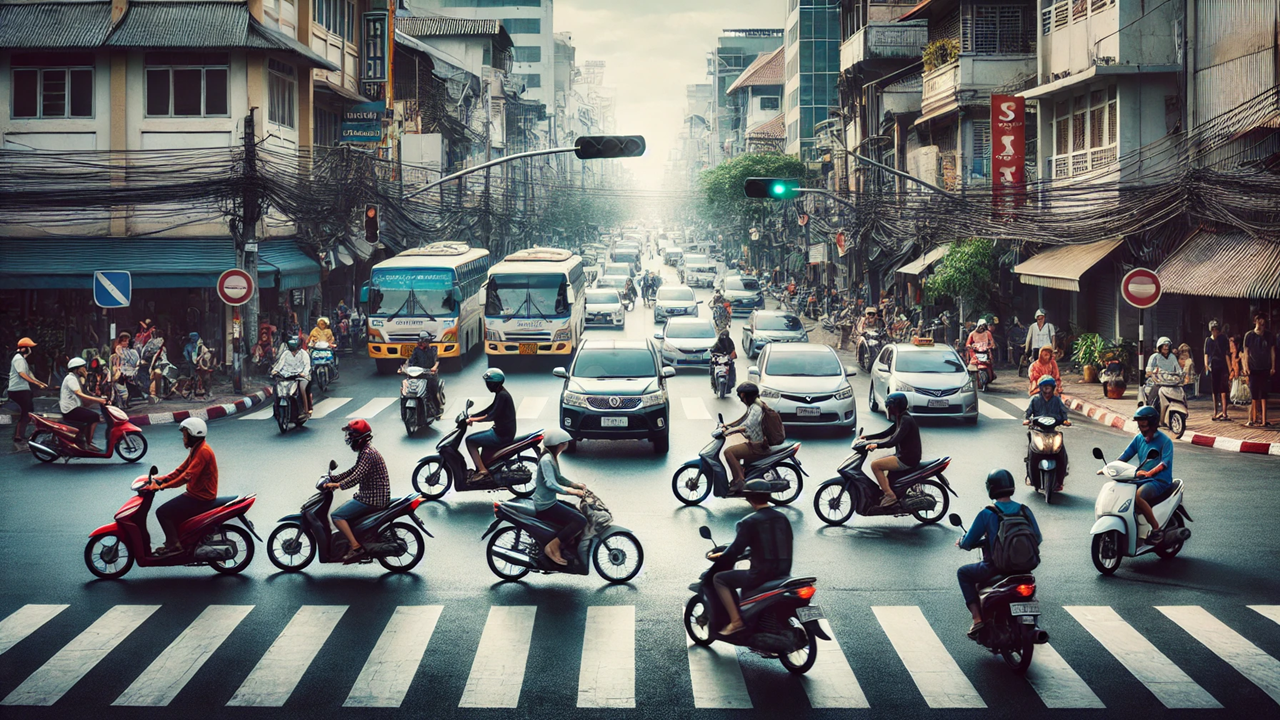Race Against Time: Addressing Road Safety in South-East Asia
The WHO South-East Asia Regional Status Report on Road Safety reveals that the region accounts for 28 percent of global road traffic deaths, with vulnerable road users like pedestrians, cyclists, and motorcyclists being disproportionately affected. The report calls for urgent improvements in governance, infrastructure, law enforcement, and post-crash care to reduce fatalities and meet the UN’s goal of halving road traffic deaths by 2030.

Road safety in South-East Asia is a growing public health and development concern, with the region accounting for a staggering 28 percent of the world’s road traffic deaths, according to the WHO South-East Asia Regional Status Report on Road Safety. The report highlights a pressing need for action to tackle road safety issues, with a focus on protecting vulnerable road users such as pedestrians, cyclists, and motorcyclists. The findings reveal that despite some progress, the road safety situation in the region remains alarming, especially in countries like Nepal, Thailand, and Myanmar.
The Road Safety Crisis: A Grim Reality
The numbers are stark. In 2021 alone, an estimated 330,222 people lost their lives in road traffic accidents across the WHO South-East Asia region. Vulnerable road users, including pedestrians, cyclists, and motorcyclists, account for a shocking 66 percent of these fatalities. Two- and three-wheeler users make up nearly half of the road traffic deaths in the region, with motorcyclists particularly at risk. In countries like Nepal, Thailand, and Myanmar, the road traffic death rate is far higher than the global average of 15 deaths per 100,000 people.
One of the key challenges, as the report highlights, is the gap between the actual number of road traffic deaths and the figures reported by national authorities. For instance, Thailand has made significant strides in reducing this gap, but in other countries, the disparity remains vast. Bangladesh, for example, reports a major undercount, with estimates suggesting that actual road traffic deaths are six times higher than reported.
Vulnerable Road Users: A Call for Urgent Action
The report emphasizes the disproportionate impact of road traffic accidents on vulnerable groups, particularly pedestrians, cyclists, and motorcyclists. These road users are often unprotected and share space with fast-moving motor vehicles, making them highly susceptible to severe injuries or fatalities. The lack of dedicated infrastructure for pedestrians and cyclists, as well as poor enforcement of helmet and seatbelt laws, further exacerbates the problem.
In South-East Asia, the number of motorized two- and three-wheelers on the road has surged, leading to increased risks for both drivers and passengers. Helmets, though mandatory in many countries, are not always worn, or when they are, they often fail to meet safety standards. For instance, in Nepal, while there is a helmet law, enforcement mainly targets riders, leaving pillion passengers unprotected. This leaves a critical gap in safety measures that could save lives.
Challenges in Data Collection and Reporting
A striking feature of the WHO report is the discrepancy between country-reported data and WHO estimates. Many countries in the region lack accurate systems for collecting and reporting road traffic deaths and injuries, leading to unreliable data that hampers effective policy-making. In countries like Bangladesh, Myanmar, and Timor-Leste, the gap between reported and estimated deaths is particularly wide, underscoring the need for more robust data collection systems.
Thailand, on the other hand, has shown how improved data management can lead to better road safety outcomes. By integrating various data sources, the country has reduced the gap between estimated and reported road traffic deaths from 57 percent in 2010 to just 7 percent in 2021. This is a model that other nations in the region could follow to improve the accuracy of their road safety data and, by extension, their response to the crisis.
Addressing the Root Causes: Policy and Infrastructure
The report makes several recommendations to address the root causes of road traffic deaths and injuries in the region. One of the main areas of focus is the need for stronger institutional leadership and governance. Many countries in the region lack dedicated agencies or road safety action plans, leading to fragmented efforts to improve road safety. The WHO calls for the establishment of lead agencies in each country, tasked with coordinating road safety policies and ensuring that all road users are protected.
Another critical recommendation is the improvement of road infrastructure. Poorly designed roads, insufficient signage, and inadequate pedestrian crossings make it dangerous for people to navigate city streets or rural highways. Countries like India, which have made efforts to identify and rectify high-risk “black spots,” offer a blueprint for improving road infrastructure in a way that reduces the risk of accidents.
Post-Crash Care: A Lifesaving Priority
An often overlooked aspect of road safety is post-crash care. The report underscores the importance of improving emergency response systems, pre-hospital care, and trauma management. In many countries, victims of road accidents do not receive timely care, which drastically reduces their chances of survival. Establishing national trauma registries and improving emergency medical services could save countless lives.
Countries like Bhutan and Sri Lanka have made progress in setting time-bound targets for emergency response times. However, most countries in the region still lack comprehensive systems for delivering timely post-crash care. This is an area that requires immediate attention if the region is to meet its road safety goals.
A Call for Collective Action
The WHO South-East Asia Regional Status Report on Road Safety provides a sobering reminder of the urgent need to address the region’s road safety crisis. With vulnerable road users accounting for a significant share of deaths, and data gaps hindering effective policymaking, South-East Asia must take bold and coordinated action to improve road safety. Strengthening governance, enhancing road infrastructure, enforcing safety laws, and improving post-crash care are all essential steps toward achieving the UN’s ambitious target of halving road traffic deaths and injuries by 2030.
- FIRST PUBLISHED IN:
- Devdiscourse










